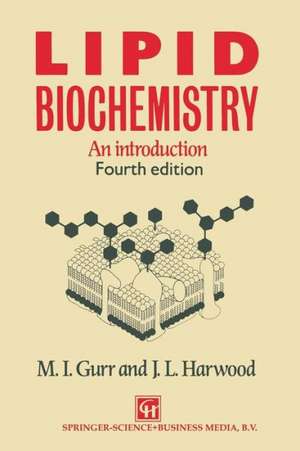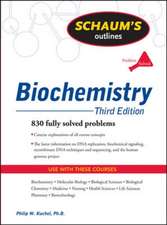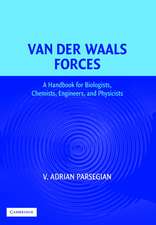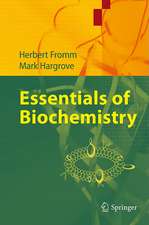Lipid Biochemistry: An Introduction
Autor J. L. Harwood, M. I. Gurren Limba Engleză Paperback – 28 feb 1991
Preț: 395.09 lei
Nou
Puncte Express: 593
Preț estimativ în valută:
75.61€ • 78.65$ • 62.42£
75.61€ • 78.65$ • 62.42£
Carte tipărită la comandă
Livrare economică 15-29 aprilie
Preluare comenzi: 021 569.72.76
Specificații
ISBN-13: 9780412266201
ISBN-10: 0412266202
Pagini: 406
Ilustrații: VIII, 406 p. 32 illus.
Dimensiuni: 155 x 235 x 22 mm
Greutate: 0.58 kg
Ediția:Revised
Editura: Springer Us
Colecția Springer
Locul publicării:New York, NY, United States
ISBN-10: 0412266202
Pagini: 406
Ilustrații: VIII, 406 p. 32 illus.
Dimensiuni: 155 x 235 x 22 mm
Greutate: 0.58 kg
Ediția:Revised
Editura: Springer Us
Colecția Springer
Locul publicării:New York, NY, United States
Public țintă
ResearchCuprins
1 The nature of lipids and their place in living things.- 2 Isolation, separation and detection of lipids.- 3 Fatty acid structure and metabolism.- 4 Lipids as energy stores.- 5 Dietary lipids: implications for health and disease.- 6 Lipids in cellular structures.- 7 Metabolism of structural lipids.- 8 Lipid functions.
Recenzii
`This should prove to be a valuable addition to the library of a generation of food biochemists and food scientists.'
Food & Nutrition Press
`This new edition has been rewritten and brought up to date and will give the reader both information and perspective about lipids.'
General Pharmaceutical
`...well illustrated...a succinct, but wide-ranging survey of nearly all aspects of lipid biochemistry...reasonably priced...As a first reference it will certainly be useful for scientists.'
Journal of Plant Physiology
Food & Nutrition Press
`This new edition has been rewritten and brought up to date and will give the reader both information and perspective about lipids.'
General Pharmaceutical
`...well illustrated...a succinct, but wide-ranging survey of nearly all aspects of lipid biochemistry...reasonably priced...As a first reference it will certainly be useful for scientists.'
Journal of Plant Physiology











